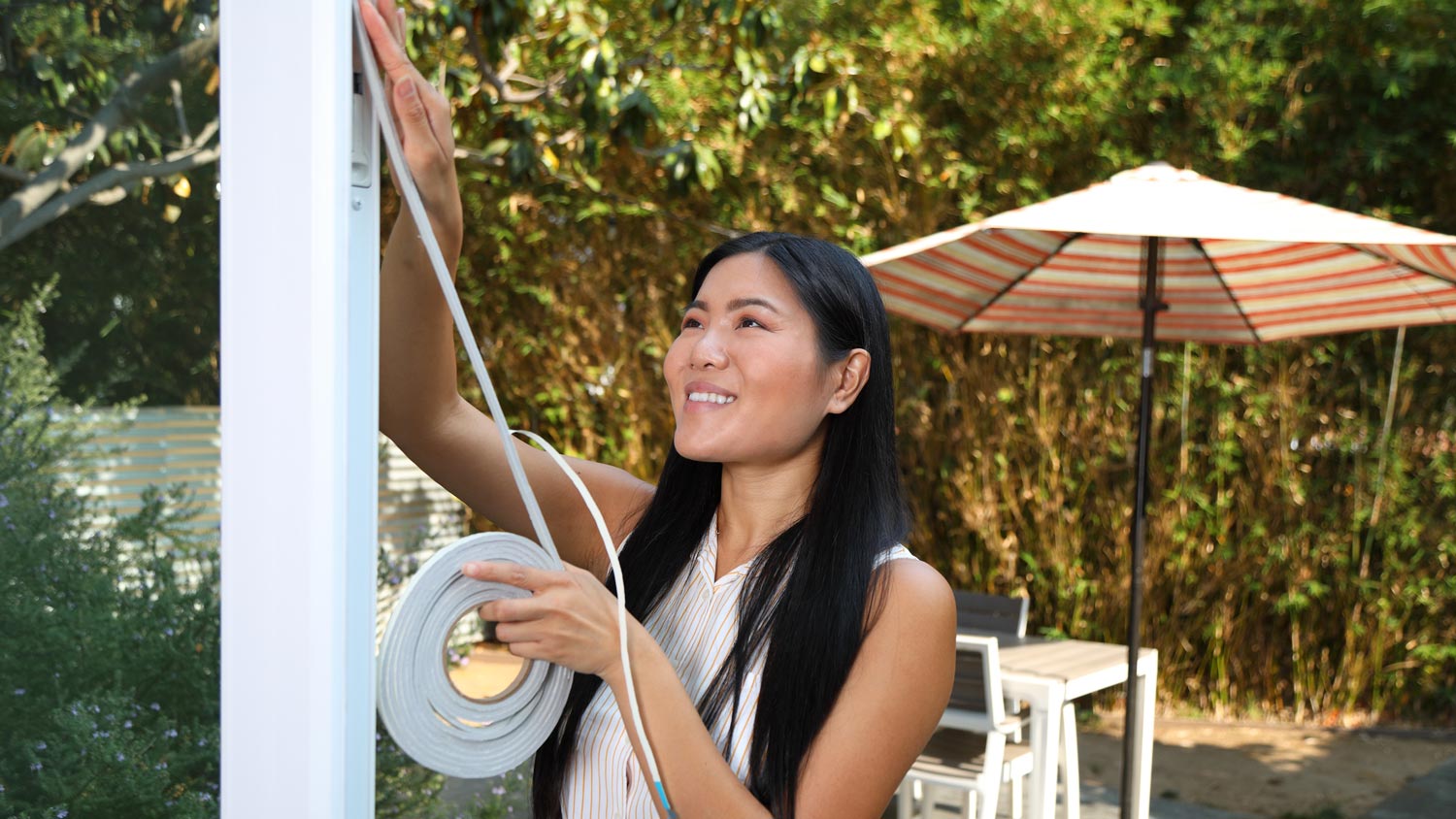
Window replacement enhances your home's appearance and helps to maintain a consistent indoor temperature. Discover the cost of window replacement in Columbus.
Wiggle your windows loose


There are few things as frustrating as wanting to open a window on a fresh spring day only to find the window won’t budge. The likely culprit? Your stuck window is painted shut. Fortunately, it’s a simple problem with a simple solution—follow these steps, and you’ll know how to open painted shut windows in no time.
There’s an inexpensive tool on the market aptly called a window opener. This handy device makes opening old windows painted shut a lot quicker than the traditional method of sliding a putty knife in between the sash and window frame. You can purchase this stainless steel blade—essentially a paper-thin, serrated, wedge-shaped saw—from most hardware stores.
Before you start, make sure the window is unlocked. Plan on working on the window from the outside, so get your ladder set up if the window is on the second floor or out of reach. Working on a window from the inside is a lot more work that will require cleanup and mildly destructive removal of the interior window frame.
The last prep step to take is checking for the presence of lead-based paint. If you live in an old house built before 1978, it’s likely there is lead paint on the outside and inside. You’ll want to follow best lead-safety practices and test using a commonly available swab. If lead is present, you should take basic precautions like wearing a dust mask, vacuuming with a HEPA filter, and thoroughly washing your clothing after the job is complete to prevent exposure to others, especially children.

Before you start chipping away at the paint sealing the window down, you’ll need to ensure it is actually painted shut and not just nailed. If the latter, you can start by removing the screw or nail that is preventing the window from opening with a screw gun or hammer and pry bar, respectively, before attempting to break the window free.
The thin blade of the window opener is specifically designed to easily slice through a paint seal from the window edge to the frame. Work it like a saw with short back-and-forth motions, and don’t force the tool, or it will break. It’s made to get in deep and cut the years of old paint away from the window frame like a razor saw. If you don’t have access to a window opener, you can use a putty knife instead, but for excessively painted cracks, you’ll have a hard time making this work.

Both sides of the window will need to be free of the gluing effects of excessive paint buildup, but you’ll also need to check the tops and bottom edges of the sash to ensure they are free and clear. Homeowners sometimes caulk or otherwise seal up these exposed joints in an effort to prevent water intrusion. Using the same window opener tool, work the blade between the cracks to create a clean break between them.
Now for the big hurrah. Once you feel like you’ve broken the seal and created a clear separation between the window sash and the frame, give the window a quick tug upwards. You might have to wiggle the sash or deliver sharp blows to the upper edge of the window to make the separation complete. If these tricks don’t work, take a pry bar to the bottom edge and gently work the window up until you’ve got movement.

Once you’ve freed the window from its previously painted shut situation, you can ensure smooth movement of the sash in the future by taking rough, 50-to-80-grit sandpaper to the slide rails. This will remove all the old material and create a clean channel for the sash to work the way it was intended.
The process of breaking a window free from decades of excessive painting will generate a host of chips and scratches on the exterior of the frame. You’ll want to sand down obvious sections and, if there is raw wood, prime with a high-quality exterior primer. Keeping the window all the way open while you apply the topcoat is a smart move to prevent the windows from sticking back together again. Paint the entire window, sash, and frame with fresh paint to complete the job.
Beyond touching up the paint, you should assess for any further damage to the functionality of the window. If there are any repairs or replacements necessary—like cracks in the window—you should deal with those promptly.
While jimmying open painted windows is easily something you can learn to do yourself, if the entire house has issues with excessive, dried paint on the window edges, you might want to hire a professional painter to save you the time and elbow grease. Call a window repair professional near you if you can’t get the window open. They can get the job done quickly and affordably.
Kristin Luna contributed to this piece.
From average costs to expert advice, get all the answers you need to get your job done.

Window replacement enhances your home's appearance and helps to maintain a consistent indoor temperature. Discover the cost of window replacement in Columbus.

Window repair costs in Columbus, Ohio, depend on several pricing factors, including the type and size of the repair it needs and the window itself.

Find out the cost to replace weatherstripping. Learn about material and labor costs, cost-saving tips, and what impacts your total price.

Wondering how to apply window film? We’ll walk you through the steps—and even show you how to make your own application solution.

When it's time to winterize or update your frames, who do you call to caulk windows? It turns out that you have a few options, but there's one clear winner.

Find out how much it will cost to replace a basement window in your home, based on the type and size of the window, whether it’s prefab or custom, and who does the installation.